Pregnancy tests come in a variety of different forms but they all work in the same way. As you sit in the bathroom, nervously waiting for the results, it can be disconcerting to discover a very faint line.
But many of us have been there and stared blankly at said faint line wondering what it means. Am I pregnant? Or is this a malfunctioning test and I need to take another? Could it be a false positive?
The questions that run through your mind can make you feel even more anxious. But understanding how a home pregnancy test works can make it a little easier to figure out.
The Different Types of Pregnancy Tests and How They Work
If you’ve had a missed period from your menstrual cycle then one of the first things you’re going to do is rush out to buy a home pregnancy test stick.
But when you get to the chemist, you will notice that there is a selection of tests to choose from; but which is best and which will give the clearest result?
Blue Dye vs Pink Dye
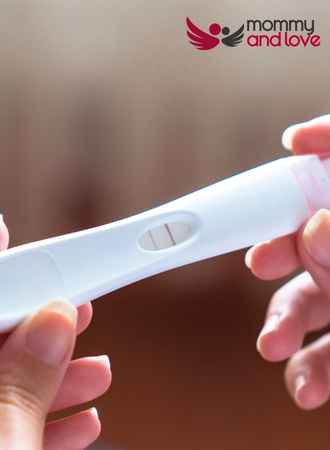
When you purchase home pregnancy tests, there is a dye inside which is used to demonstrate the test results. These dyes are either pink or blue but there’s a lot of speculation over which is best.
Before we tell you whether pink or blue is more reliable, first understand that both of these pregnancy tests work in exactly the same way.
When you take a pregnancy test, you must urinate on the stick (you can also dip the stick into a cup of urine, if you find this easier.)
It’s always best to use your first pee of the day as this will be most concentrated and, if you’re pregnant, will have higher levels of the pregnancy hormone, HCG.
Once the urine has sat on the test stick for a few minutes, the reactive paper will detect HCG and display either one or two lines. The further into a pregnancy you are, the more HCG will be in your body and the easier it is for the test to pick up on this.
With pink or blue dye tests, the result is shown with one control line, which lets you know that the test has worked, and one positive line if HCG has been detected.
The problem with blue dye tests is that there is room for the test window to show an evaporation line which a lot of people confuse with a positive pregnancy test, even though it is a negative result.
Since this doesn’t happen with pink dye, these are generally thought of as being the more reliable option, as when there is no HVG present, only the control line is seen.
Digital Pregnancy Tests
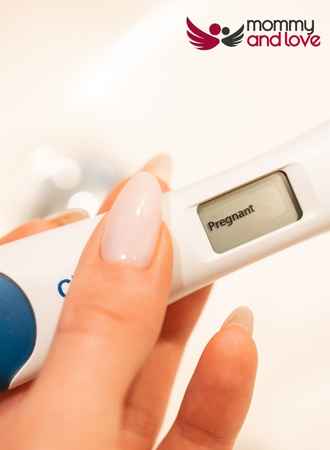
Digital pregnancy tests eliminate the need to worry about a faint evaporation line, a false positive, or just a faint line that you can’t quite figure out.
While a digital pregnancy test works in exactly the same way, these pregnancy tests show a clear digital result that will read ‘pregnant’ or ‘not pregnant’ rather than the test line.
Many also have an indicator to show roughly how many weeks you are according to the levels of HCG detected in your urine.
What is HCG?

We’ve talked a lot about HCG levels and how these affect the outcome of your pregnancy test but what exactly is HCG and what does it do?
HCG is short for human chorionic gonadotrophin and this is a hormone that is only produced during pregnancy.
The further into a pregnancy you go, the more of this hormone your body produces; until the baby is born and the production ceases. However, it is worth noting that HCG will remain in your body for some time after birth.
The HCG hormone is responsible for thickening the lining of the womb and creating an environment that is suitable for supporting the growing baby.
When the Control Line is Faint

It is not uncommon to get a faint line on your pregnancy test, especially if you are testing early in the pregnancy.
While the second line may be faint due to low HCG levels, it is also possible for the control line to be faint if your body still doesn’t have high levels of the hormone.
The most important thing to note is that there is indeed a control line present. If this line doesn’t show up at all, it tells you that the test has not worked and you will need to take a new one.
Can a Faint Line Be Negative?
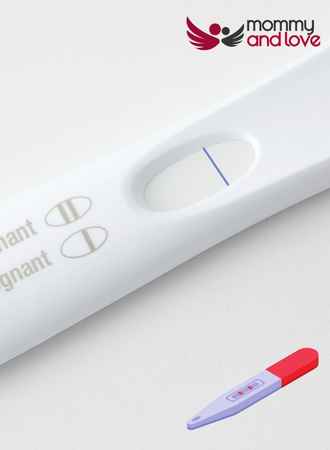
During the testing process, it is not uncommon for women to find a faint line.
This is because we often test immediately after a missed period or when we experience other early pregnancy symptoms.
But these symptoms can begin very soon after conception meaning that we may suspect pregnancy before our bodies have produced enough HCG to give a clear positive test result.
But if you’ve found yourself staring at even a very faint positive line on a pregnancy test then it’s very likely that you are pregnant.
Using a reliable test will create a positive result even if there’s only a little HCG in your urine.
The mere presence of this hormone suggests you are pregnant because, if you weren’t, your body wouldn’t even be producing it.
Are Faint Lines on a Pregnancy Test Positive?

If you have a faint positive line then there’s a good chance that you are pregnant.
Positive pregnancy tests only occur when there is HCG detected and since the body doesn’t produce this hormone outside of pregnancy, a false positive is rare.
This is especially true when you consider how reliable modern pregnancy tests are.
In some upsetting cases, a faint line could indicate a very early miscarriage.
While your body would have started producing HCG at the time of conception, this would have now stopped.
But it takes some time for the hormone to be completed removed from your body so it’s still possible to get a positive result even after miscarrying, this is called a chemical pregnancy.
It could take as long as 9 weeks for all traces of HCG to leave the body after an early pregnancy loss.
How Long After a Faint Positive Should I Test Again?
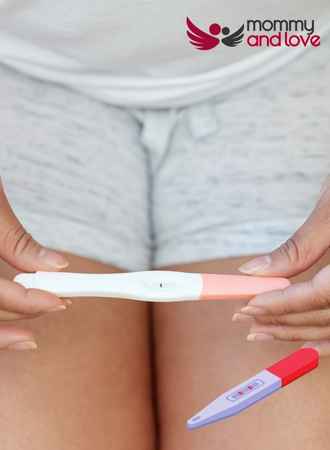
If you have taken a pregnancy test and see a faint line then this can leave you feeling confused. But don’t worry, your body will be busy making lots of HCG during early pregnancy so you won’t have to wait long before retesting.
Generally speaking, it’s wise to wait for another two to three days before trying again. Most pregnancy tests will show a darker line at this point.
However, if you still have a faint positive line then you could go to your doctor for a blood test for a more accurate pregnancy test result.
Just remember that, even with an early result pregnancy test, the line can still be faint if you’re testing very early on.
Also remember, if you have tested too early, you may get a false negative result, so if your menstrual cycle does not return, try testing again.
How Faint is Too Faint on a Pregnancy Test?

When you take your test, try to watch as the lines develop. For some people, this can be nerve-racking but it’s worth doing as it will help you determine whether the line is too faint.
If you’re going to get a faint positive line then this will appear within a few minutes of taking the test. You will see where this develops and even though it might not be clear, it will look different from an evaporation line.
Evaporation lines are what is left behind by your urine and usually appear as a colorless line so it’s easy to tell the difference once you know this.
These lines are what you would call ‘too faint’ and can be dismissed as a false positive result.
Does a Faint Line on First Response Mean I’m Pregnant?
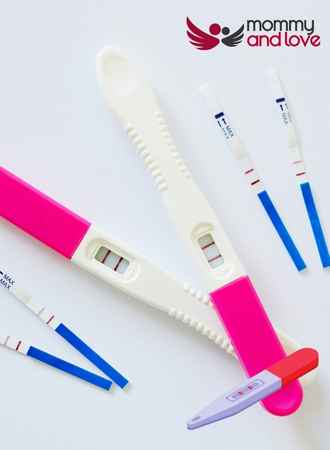
According to First Response, a faint line still means that you are pregnant.
These tests use pink dye so there is no chance of that faint line being mistaken for an evaporation line.
Should you get a faint line on a First Response test, the manufacturer suggests double checking with your doctor to confirm your pregnancy.
Why Do I Keep Getting Faint Positives on First Response?

One of the main reasons that you may keep getting faint lines when using a First Response pregnancy test is that you are still very early on in your pregnancy.
There are a lot of tests that allow you to test early but you cannot guarantee that you will get a super clear result.
As your pregnancy progresses and HCG levels rise, taking a pregnancy test will yield much clearer results with a dark line.
This is why it is important to wait a few days between testing to ensure that you get the most easy-to-understand result.
Do All First Response Tests Have Evaporation Lines?

It is common for a pregnancy test to show an evaporation line but this doesn’t happen every time.
It’s far more common with blue dye tests as the line can look similar to a very faint blue positive result. With pink dye tests, it is much easier to tell them apart.
If you are in any doubt, you should wait for a few days and restest to get a clearer result. If no clear line appears after two or three home pregnancy tests, we would recommend having further tests with your doctor.
A faint positive pregnancy test line can be confusing but it doesn’t have to be. Just remember to wait a few days and retest for a more accurate result. If you’re still unsure, visit your doctor for a blood test.
The Bottom Line When A Pregnancy Test Shows a Faint Line

Even if the line is faint, if you are using a First Response brand pregnancy test, the manufacturer suggests double checking with your doctor to confirm your pregnancy.
As HCG levels rise in early pregnancy, taking another home pregnancy test in a few days will most likely show a darker line.




